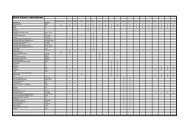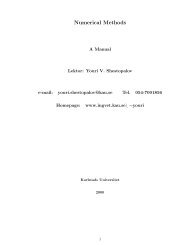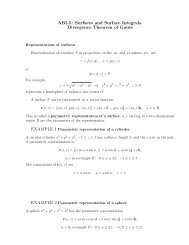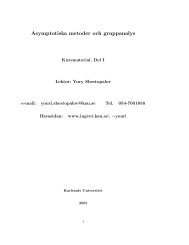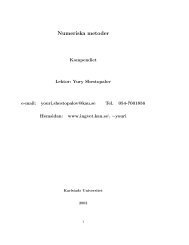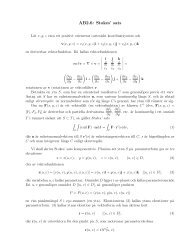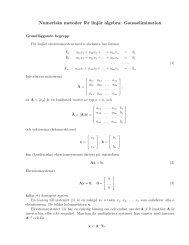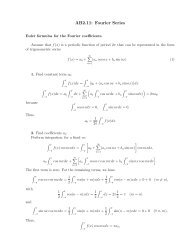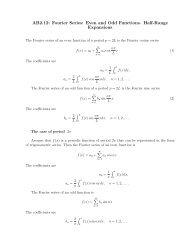Create successful ePaper yourself
Turn your PDF publications into a flip-book with our unique Google optimized e-Paper software.
We see that the equation has the unique solution if and only ifRewrite this condition using formula (329)12∫1−1f 02 = − 1 π f 1.dyf(y) √ = − 1 1 − y2 π∫1−1y f(y)dy√ 1 − y2 .Here, one can uniquely determine coefficient b n , which provides the unique solvability of theequation.19 Matrix representation of an operator in the Hilbertspace and summation operators19.1 Matrix representation of an operator in the Hilbert spaceLet {ϕ n } be an orthonormal basis in the Hilbert space H; then each element f ∈ H can∞∑be represented in the form of the generalized Fourier series f = a n ϕ n , where the sequencen=1∞∑of complex numbers {a n } is such that the series |a n | 2 < ∞ converges in H. There exists an=1(linear) one-to-one correspondence between such sequences {a n } and the elements of the Hilbertspace.We will use this isomorphism to construct the matrix representation of a completely continuousoperator A and a completely continuous operator-valued function A(γ) holomorphic withrespect to complex variable γ acting in H.Assume that g = Af, f ∈ H, andg k = g k (γ) = (A(γ)f, ϕ k ),i.e., an infinite sequence (vector) of the Fourier coefficients {g n } = (g 1 , g 2 , ...) corresponds to∞∑an element g ∈ H and we can write g = (g 1 , g 2 , ...). Let f = f k ϕ k ; then f = (f 1 , f 2 , ...). Setk=1N∑∞∑f N = P f = f k ϕ k and Aϕ n = a kn ϕ k , n = 1, 2, . . .. Then,k=1k=1N∑lim Af N ∑ ∞ ∞∑ ( ∑ ∞ )= lim f n a kn ϕ k = Af = a kn f n ϕk .N→∞ N→∞n=1 k=1k=1 n=1∞∑∞∑On the other side, Af = g k ϕ k , hence, g k = a kn (Af, ϕ k ) = (g, ϕ k ). Now we set Aϕ k = g kk=1n=1and(g k , ϕ j ) = (Aϕ k , ϕ j ) = a jk ,71



